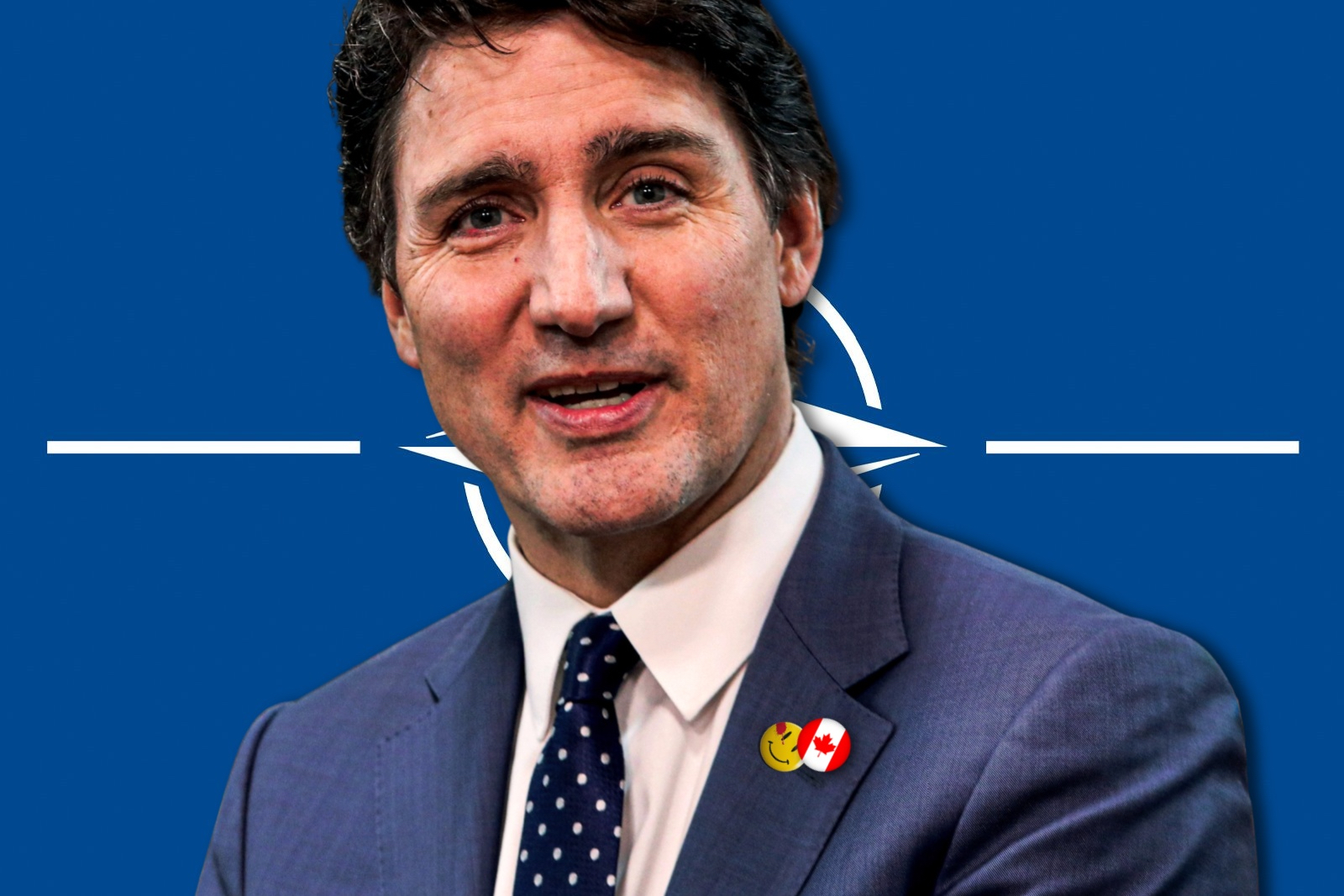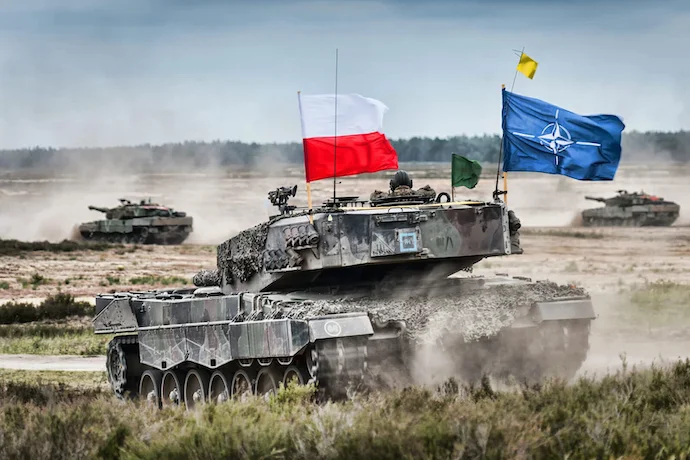
A Question of NATO Credibility: Can Allies Count on Canada?
The global order is fracturing. Europe is entering what Polish Prime Minister Donald Tusk describes as a “pre-war era.” Now more than ever, NATO needs unity. And with Russia’s invasion of Ukraine stretching through its third year, even traditional defense holdouts have fallen in line. Germany — Europe’s largest economy — has shifted away from two decades of rapprochement to confront a stark reality: the era of the peacetime dividend is over.
Supporting Ukraine has already proven costly, not just in terms of military aid but also through broader economic impacts on Western economies. NATO has strengthened its strategic posture, but the conflict has also revealed significant gaps in the alliance’s readiness for sustained, high-intensity warfare.
The fighting in Ukraine has underscored the enormous material demands of modern warfare, including vast quantities of artillery shells, armor, missiles, and drones. Early in the conflict, Russia was firing upwards of 60,000 artillery rounds a day, amounting to a staggering 12 million rounds in 2022. Facing a shortfall in ammunition production, Russia has reportedly turned to North Korea for support, with at least 16,500 containers of munitions and related materiel shipped to Russia since September 2023.
Ukraine, meanwhile, is estimated to be using around 7,700 rounds per day, achieving significant effects on the battlefield. Since the conflict began, Russia has lost an estimated 8,800 armored fighting vehicles, highlighting one side of the intense attrition facing both nations.

For NATO, “the need for robust, deployable and sustainable European land forces, able to conduct high-intensity combat as part of multi-domain forces” is now firmly back on the agenda, according to researchers at the International Institute of Strategic Studies.
This shift from peacekeeping and counterterrorism to conventional warfare necessitates a significant increase in defense industrial capacity among NATO allies. However, for several years now, misalignment in defense obligations has been a growing point of contention.
Canada in the spotlight
The pressure is showing, with a leaked intelligence document bearing the seal of the U.S. Joint Chiefs of Staff, revealing Western discontent with Canada, NATO’s nice-guy nation. Behind closed doors, allies have expressed frustration and disappointment about Canada’s unreliability as a partner and its continued reluctance to spend on defense.
“Widespread defense shortfalls hinder Canadian capabilities,” the document says, “while straining partner relationships and alliance contributions.” The document states that Germany is concerned that Canada will struggle to fund aid for competing Ukraine and NATO pledges. Turkey is aggrieved at Canada’s decision not to support the transport of humanitarian aid after the earthquake there in 2023. And Haiti’s government is frustrated by Canada’s decision not to lead a mission to help with the Haitian security situation.
Understandably, commentators anticipated a “public shaming” for Canadian Prime Minister Justin Trudeau at the latest NATO summit in July. Until recently, Trudeau had been telling partners that his government would not, and probably never would, reach NATO’s symbolic 2% of GDP defense spending. However, with clouds on the horizon and 24 of its 32 members now meeting this target – up from just 6 in 2021 – allies are certainly no longer indulging his opinion that “there are many ways of evaluating one’s contributions to NATO.” Facing a bludgeoning on the world stage, Trudeau capitulated: 2% — by 2032.
A letter sent to Trudeau in May from 23 U.S. lawmakers gave an indication of how this news was received: “We are concerned and profoundly disappointed that Canada’s most recent projection indicated that it will not reach its two percent commitment this decade.”
A partner in crisis
This wrangling plays out in a unique context. NATO faces a colossal, multifaceted challenge, as its members must scale their defense industrial capacity while simultaneously leveling up the sophistication of their military capabilities. The war in Ukraine has shown that conflict has evolved: military forces must as well.
This concerns all NATO members, but it poses a particular problem for Canada. The Canadian Armed Forces are in a well-documented crisis.
“Years of restraint, cost cutting, downsizing, and deferred investment have meant that Canada’s defense capabilities have atrophied,” explain the authors of an open letter published on the CDA Institute website in May this year. The 60 signatories include several former Canadian defense ministers, military commanders, and security and intelligence officials.

Vast swathes of Canada’s aircraft and naval vessels are many decades outdated. Operational and equipment readiness is in a dire state, with a large portion of Canada’s significant military assets unserviceable, according to War on the Rocks’ Philippe Lagassé and Justin Massie. The authors highlight that only 45% of the Air Force fleet, 46% of the Navy, and 54% of the Army are operational. This undermines Canada’s ability to meet even modest military commitments.
Despite this year’s policy announcements, delays and inefficiencies in procurement processes mean that many needed upgrades will not be realized anytime soon. The age and condition of existing equipment require extensive maintenance, further straining already limited resources.
On top of this, the unattractiveness of military careers in Canada, exacerbated by a now infamous sexual misconduct scandal, has led to a bleak picture for recruitment and staff retention — a reality highlighted by Canada’s defense minister, Bill Blair, who, in May described the situation as “a death spiral.”
The Canadian Armed Forces are critically understaffed, short by about 16,000 personnel, or 15% of their total strength. Creative recruitment efforts, including opening the military to permanent residents, have done nothing to prevent the deterioration in military capability.
Canada’s critical role
These concerns are now in sharp focus, with Canada serving as the framework nation in Latvia for NATO’s enhanced Forward Presence. The NATO deployment represents a critical reassurance effort with regard to Eastern Europe in general and the Baltic States in particular, whose capacities are limited in the face of the immediate Russian threat. Established in 2016, Forward Presence began with four multinational battalion-size battlegroups stationed in Estonia, Latvia, Lithuania, and Poland, with an additional presence later added in Bulgaria, Hungary, Romania, and Slovakia.
In 2022, NATO members agreed to scale up the eight multinational battlegroups from battalion to brigade-size, bringing their forces on high alert to 300,000 personnel, a sevenfold increase.
But, amid prolonged reluctance to invest in defense and the grim outlook of its military, doubts are emerging about Canadian defense assurances in Latvia. At the moment, roughly 700 Canadian troops are deployed, a number that is expected to rise to 2,200 by 2026.
In reality, Canadian land forces have only three brigades from which to organize the necessary troop rotations. Additionally, they will need to overcome the aforementioned capability, equipment, and personnel deficits to do so. It is, therefore, reasonable to wonder whether such a force will be up to the task of any confrontation with Russia, should it arise.
Canada did make the noteworthy deployment of a squadron of 15 Leopard 2A6 tanks to Latvia, lauded at the end of 2023. However, sustaining this deployment could become increasingly complex due to the worldwide shortage of spare parts for these platforms.
While the needs for unmanned aerial vehicles (UAVs), counter-UAVs, loitering munitions, and anti-tank equipment are now well understood – and alluded to in Canada’s most recent Defense Policy Update – it is not yet clear how the Canadian Armed Forces will address them.
Other subjects, such as artillery, seem to be far less transparent despite its critical role in Ukraine. As Brigadier General Serhii Baranov, former head of Ukraine’s artillery and rocket forces, notes, “The missile forces and artillery of the Armed Forces of Ukraine have been and remain the main means of fire destruction of the enemy.” In Latvia, Canada has only deployed towed M777 Howitzers, now out-of-production, whose loss rates in Ukraine have shown them unsuitable for high-intensity operations. There is talk of replacing these systems but, as is often the case with Canadian programmes, a deadline has yet to be announced — despite the two-year timeline for full brigade-level deployment.
Canada’s defense challenges, marked by underinvestment, personnel shortages, and outdated equipment — raise significant concerns about its capacity to meet even basic NATO commitments. As the alliance intensifies its defense efforts and expands its industrial capacity, one question looms: how long can the Canadian Armed Forces sustain their presence and provide adequate security on NATO’s eastern flank?
